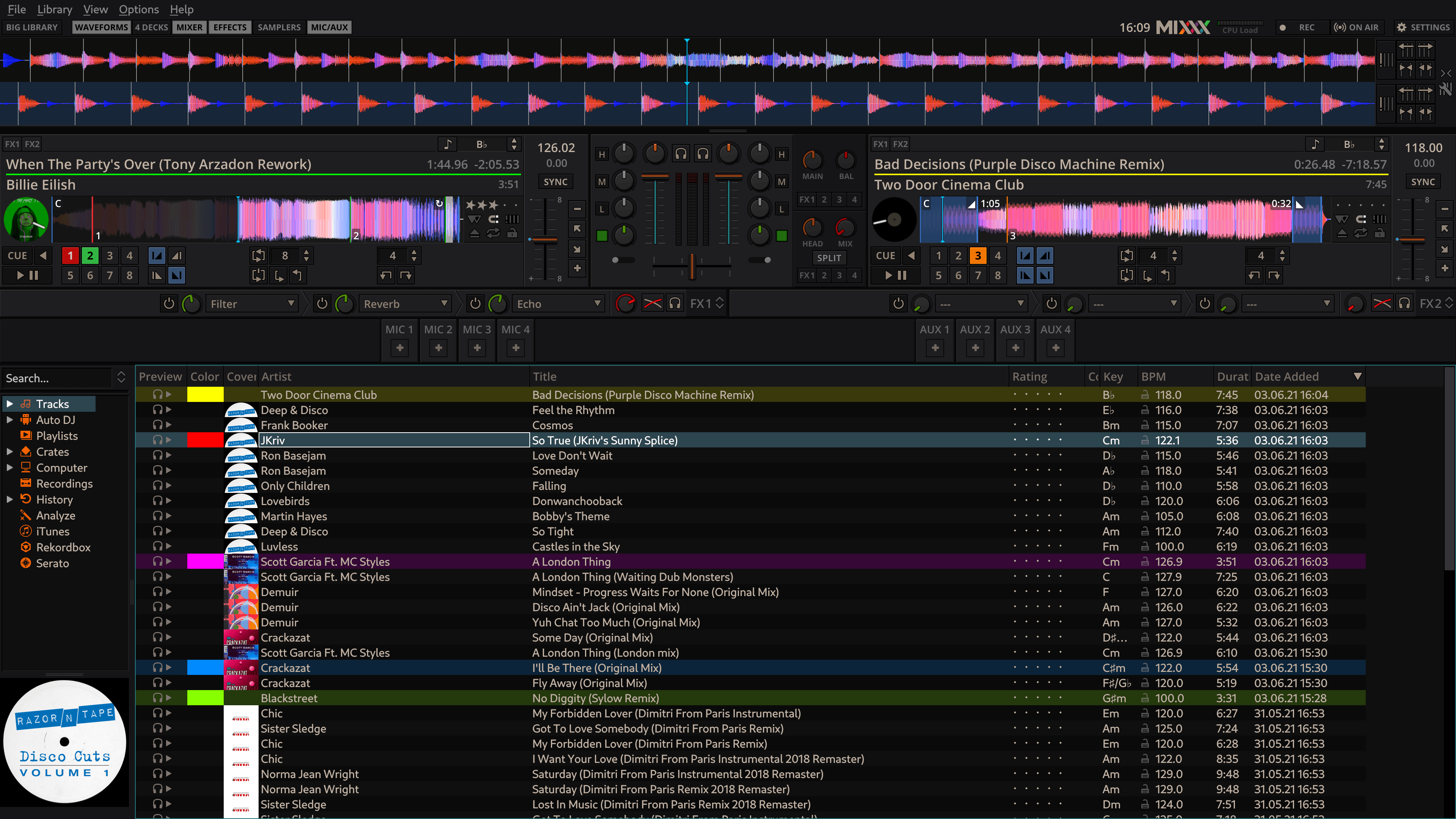One of the most valuable free tools out there for DJs often goes undiscussed. Mixxx – which is a totally free, open-source, cross-platofrm DJing software – has gone through a big push over the last year to get it to a new release, 2.3.0. While we’ve covered Mixxx many times in the past on DJTT, it sometimes goes under DJ’s radar – the team behind doesn’t have massive marketing wings, fancy PR companies, or anything like that.
So let’s take a quick look at what Mixxx has added in this 2.3.0 version, available now on MacOS, Windows, and Linux. Many of these features have been brewing over the last two years in beta (with a “total of 7477 changes over 1 million lines of code were modified” since the 2.2.4 release), but now they’re officially released:

- A new default theme/skin: instead of the older “Deere” skin, Mixxx’s latest version defaults to a massively revamped LateNight skin – it looks a lot some of the best elements of the Serato DJ and Virtual DJ default skins with a bit more of an orange accent to it.
- Color tagging in the track browser: A lot of DJs use a tagging system for their tracks, and color-tagging regularly comes up as a popular way to quickly tell song energy, type, time-of-gig to play, etc. In this release, color tagging is super-clear, highlighting the tracks in the browser:

- Cue color tagging and Intro/outro tagging: not just in the browser, but the Mixxx dev team has also added additional organizational elements inside of tracks, including colored cue points, custom cue labeling, cue point color palettes, automatic coloring, and more. They also have added the ability to add intro/outro tags to a track and “automatic silence detection” to apply those tags accurately.

- Better analysis features: two major updates to the track analysis engine, both of which make it even more formidable.
- First, they’ve added the open-source KeyFinder key detection algorithim. It’s the best free key detection algorithm out there (according to a recent roundup on Reddit) – meaning that the software’s dev team doesn’t have to find a way to justify the cost of integrating a paid algorithm.
- Second, multi-threaded analysis means that multi-core devices (most DJ laptops, for instance) will get much faster batch analysis when trying to analyze a ton of tracks.
- Direct-from-Rekordbox / Serato USB drives: Many DJs just want to try out Mixxx without committing, and if you’re coming from Rekordbox or Serato, you’re in luck. The new version allows you to quickly play off of a USB drive that contains libraries from either software (so yes, your CDJ-ready USB drive counts) inside of the software. You can load cuepoints, track colors, and playlists from either.
So, without hestiation, we can recommend that any DJs should give Mixxx a try. If you love the idea of a community-built software with complete transparency, this is the platform for you. It might not have every single feature you’d find on another DJ program, but it has more than enough to play gigs, record mixes, and so on.
We also think that this platform could be a very critical tool in bringing more hardware projects to life – like the standalone DDJ-400 we covered last year. More of that, please.





